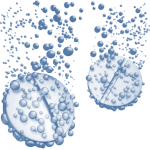Comparative study of sulfasalazine loaded microcapsules and microspheres
Jyothika Mattam, Krishna Sailaja A
Abstract:
The objective of the investigation was to prepare sulfasalazine microcapsules and microspheres and comparative study was done among the best formulations of microcapsules and microspheres. The sulfasalazine microcapsules were prepared by solvent evaporation method and microspheres by emulsion solvent evaporation technique. Ethyl cellulose was used as a polymer for the preparation of microcapsules and microspheres. Different parameters were optimized for the preparation of microcapsules and microspheres such as drug: polymer concentration, various organic solvent, organic: aqueous phase ratios, RPM. The prepared formulations were subjected to drug content analysis, entrapment efficiency, and size analysis and in vitro drug release studies. The microcapsules showed drug content of 91.2%, entrapment efficiency of 87.5%, and in vitro dug release of 89.26% for 12hrs. Whereas microspheres have shown drug content of 94.2%, entrapment efficiency of 84.6% and in vitro drug release of 90.7% for 12hrs. Drug: polymer concentration showed significant increase on entrapment efficiency. On comparison of the best formulations of sulfasalazine microcapsules and microspheres the microcapsules were found to be the best formulation with the highest entrapment efficiency (87.5%), drug content (91.2%), and in vitro drug release (89.26%) up to 12 hrs.
Keywords: Sulfasalazine, Crohn’s Disease, Solvent Evaporation Technique, Ethyl Cellulose.



